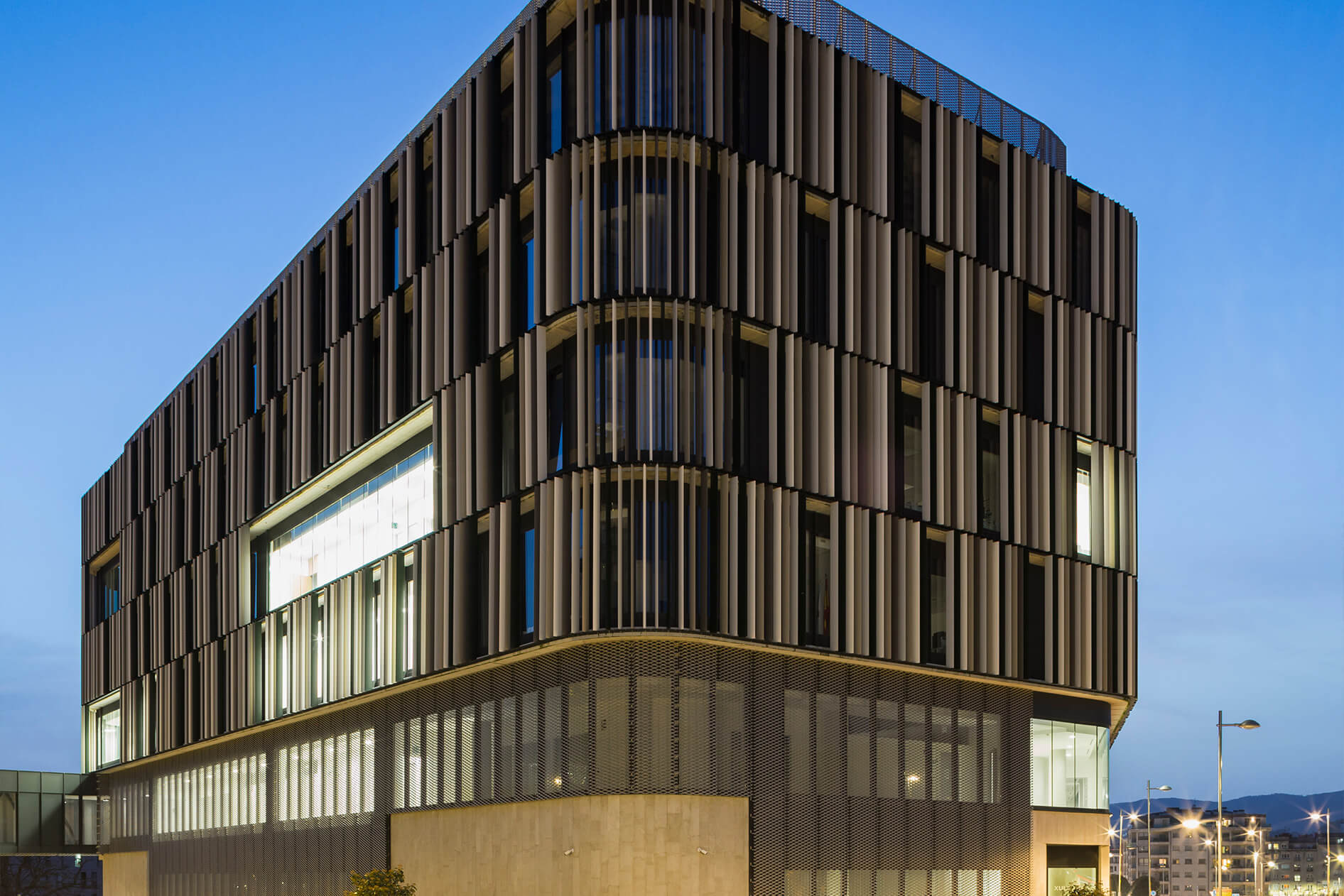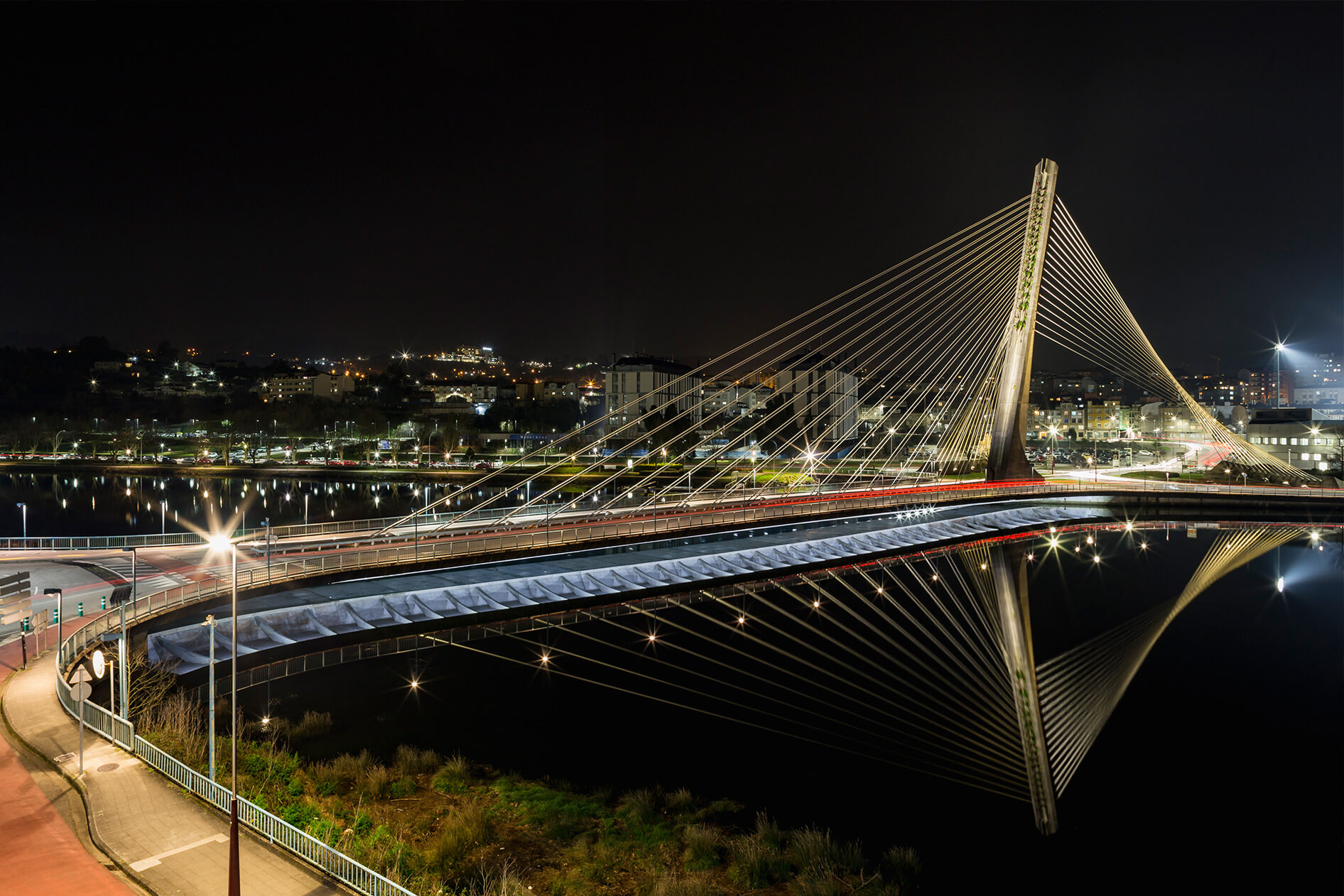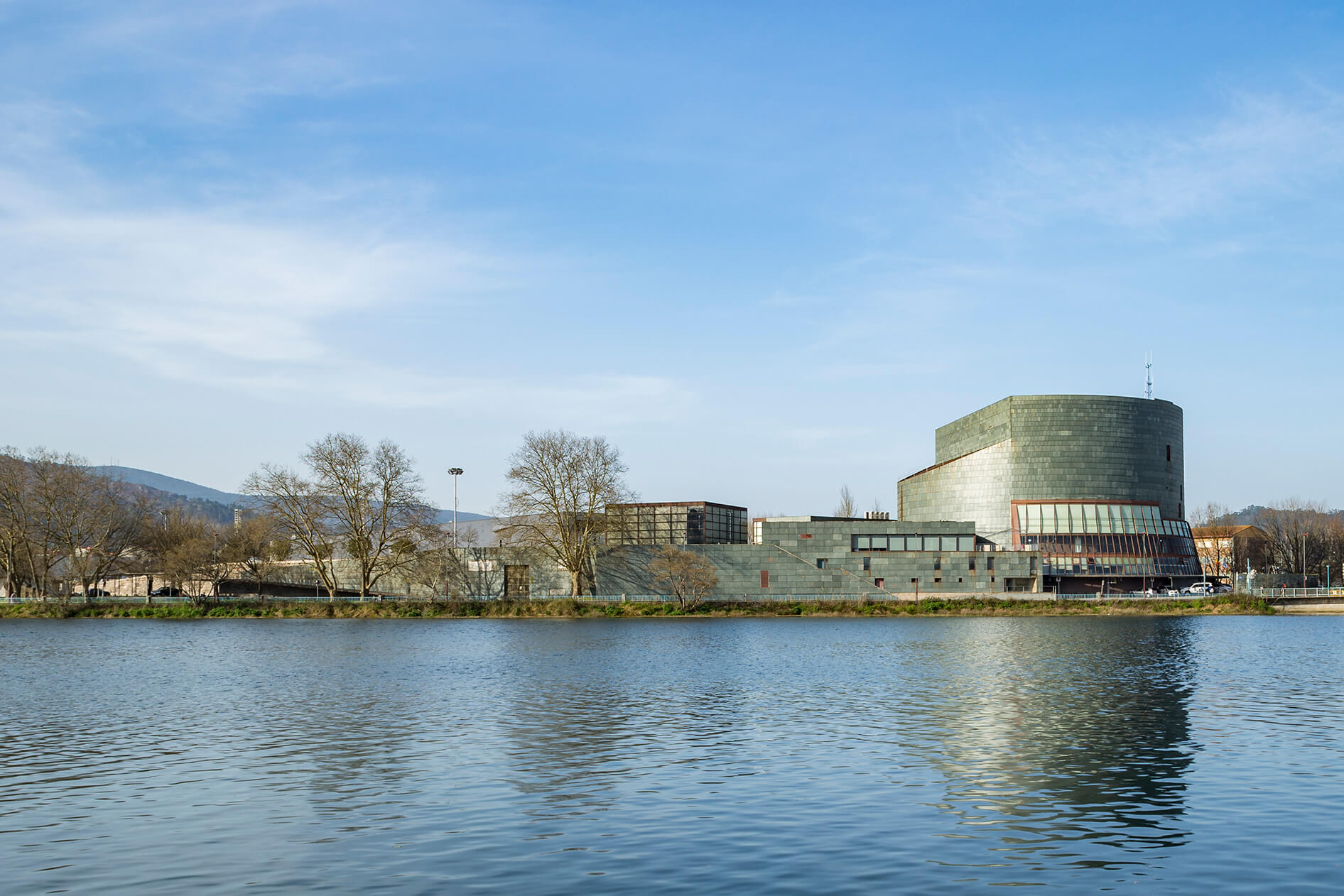Pontevedra is a city of contrasts. In addition to its impressive historic centre, which houses interesting buildings that have been preserved throughout history, there are buildings that differ greatly from the design of these old ones. The samples of contemporary architecture that the city presents are a good example of how it has adapted to the new age, while respecting its historic buildings.
Faculty of Education and Sports Sciences
The building of the Faculty of Education and Sports Sciences is a design by architects Guadalupe Piñera and Jesús Irisarri based on criteria of environmental sensitivity and the use of renewable energies. In 2008 it received the SICE award from the Higher Council of Architects’ Associations of Spain. The project was part of an exhibition on Spanish architecture at the MOMA in New York in 2006, an exhibition in which 53 projects were selected from more than 600 from all over Spain.
This faculty is part of the Pontevedra campus located on the other side of the River Lérez with green spaces and the possibility of hiking trails and visiting the fascinating Island of Sculptures.

Faculty of Education and Sports Sciences
Castelao Building
The Castelao building is a 2008 work by the architects Eduardo Pesquera and Jesús Ulargui. The search for balance between the parts stands out since the apparent lightness of the glass of the garden pavilion is compensated by the use of a heavy concrete skeleton and granite pavements. This work involved the expansion of the Museum space by more than 10,000m2 for permanent and temporary exhibition halls, restoration workshops and an auditorium with capacity for 240 people. Admission to the museum is free.

Castelao Building
Courts of Pontevedra
The new headquarters of the Pontevedra Courts is connected through a walkway with the existing judicial infrastructure. It is a design of the architects Gustavo Díaz García and Lucas Díaz Sierra with the collaboration of Naiara Montero, inaugurated in 2019. The trapezoidal-shaped building organizes its rooms around a courtyard that illuminates and ventilates the spaces. The structure of the building is composed of concrete slabs.
One of the needs of the judicial buildings is the privacy of its interior use that is why it is arranged as an introverted building. The exterior enclosure is made of a double skin. A glazed interior and an exterior one of vertical slats that act as solar protection and views. The facade offers a different image depending on the position from which the building is observed. The colors used white, gray, black and green are those existing in the buildings in the area which contributes to its integration.

Judicial Headquarters Building
Tirantes Bridge
The Tirantes Bridge is an emblem of the city on the banks of the river. This structure was inaugurated in 1995, and selected 9 years ago as one of the 33 most singular bridges in the history of Spain by the Ministry of Public Works. The architects Leonardo Fernández Troyano and Javier Manterola, architects of the work, proposed a single span bridge 120 meters long with a reinforced concrete tower 63 meters high. The tower has 17 pairs of beams that support the deck and rest on two concrete bases. These two bases act as counterweights, balancing the stress that the tower puts on the bridge.

Tirantes Bridge
Pazo da Cultura and fairground
Together with the Los Tirantes Bridge, both form a landmark of the city on the banks of the river Lérez. The Pazo de Cultura, surrounded by 10.000m2 of green areas, was inaugurated in 1997. It was designed by the architect Manuel de las Casas, as was the fairgrounds, located in the same space, but built in a second stage. The exterior of the Pazo building is made of Corten steel and slate, while the interior houses a large auditorium with a capacity for 752 people. Its location, in the midst of the marshes of the Lérez, coincides with the place where the fairs were held in the 80s.

Pazo da Cultura and fairground